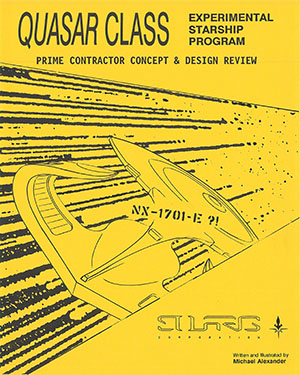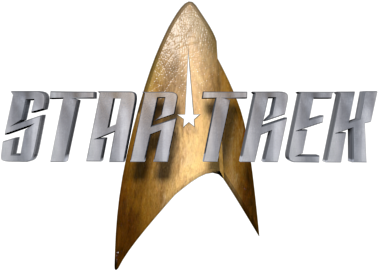Quasar Class Experimental
Starship Program
NX-1701-E
Prime Contractor Concept & Design Review Starship Program
NX-1701-E

Writer & Illustrator: Michael Alexander
Copyright: 1993
Summary:
BIAS INDUCER FOILS: A TECHNICAL SYNOPSIS
The Solaris Corporation's Avanti Effects Division is developing a revolutionary stardrive configuration for the proposed Quasar Class Starship Development Project. This new concept is a radical deviation from the standard warp nacelle design. The new advances are in the wake of contact with the Cytherians, who are 30,000 light years distant from Federation space. After a year of studying the acquired Cytherian data, exploration visionaries had to revise their precepts of exceeding the present limits of star travel.
Lessons were learned from the voyage of the USS Enterprise (1701-D) to Cytherian space. The log of the Enterprise recorded that its present Galaxy class shape precipitated a hazardous ride of quantum-level oscillation delay. Resetting ship's stabilizers to match subspace flow matrix was ineffective. A departure from the standard subspace generating planform will be necessary for efficient travel in nth continua.
Third-order Navier-Stokes equations will be used to create non-orthogonal curvilinear Quasar Class hull constructs. These formulations were first used in 2283 for the NX-1701-A, and by 2317 all research was abandoned. By 2342 the formulations were revived by the Galaxy Class Project. The Quasar Class stardrive spiroid shapes will create a Riemann-Mobius neospace vertex field. A three-lobe ellipsoid saucer section will help facilitate transition of elective mass and density whip resistance. The engines are technically nacelles, but Solaris refers to them as bias inducer foils. Instead of the standard linear placement of warp field coils, each sweeping foil will have a internal latticework of six warp field helixes to facilitate propulsion.
 |
 |
 |
 |
 |
 |
 |
 |
 |
 |
 |
 |
 |
 |
 |
 |


Download the PDF (3mb)

- View more Star Trek Blueprints and Schematics -



